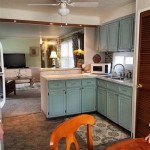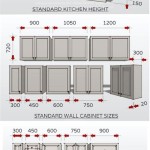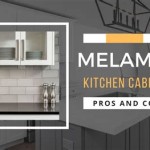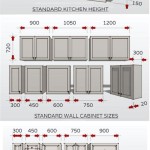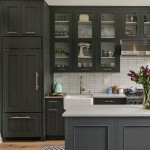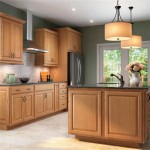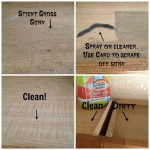The Bottom of a Kitchen Cabinet: Everything You Need to Know
Kitchen cabinets are an indispensable part of any kitchen design, providing storage space and a touch of style. While the doors and shelves are the most visible elements, it's the bottom of the cabinet that plays a crucial role in its functionality.
Types of Cabinet Bottoms
The bottom of a kitchen cabinet can be constructed using various materials and in different styles. The most common types include:
- Plywood: Durable and moisture-resistant, plywood is a popular choice for cabinet bottoms.
- Melamine: A laminate material that is resistant to scratches and stains, melamine is often used for both the bottom and interior of the cabinet.
- Particleboard: A cost-effective material made from wood particles, particleboard is suitable for areas that are not exposed to moisture.
- Solid Wood: High-end cabinets feature solid wood bottoms for exceptional strength and durability.
Essential Features
In addition to the material, there are several essential features to consider when choosing the bottom of your kitchen cabinet:
- Toe Kick: A recessed area at the bottom of the cabinet that allows for easy access and prevents the toes from hitting the cabinet.
- Leveling Legs: Adjustable legs that allow the cabinet to be leveled on uneven floors.
- Moisture Barrier: A protective coating or material applied to the bottom of the cabinet to prevent moisture from damaging the wood.
- Corner Braces: Metal brackets that provide additional strength and stability to the cabinet corners.
Purpose and Benefits
The bottom of a kitchen cabinet serves several important purposes:
- Supports the Weight: The bottom distributes the weight of the cabinet and its contents, ensuring stability.
- Prevents Moisture Damage: By providing a moisture barrier, the bottom protects the cabinet from water and other liquids.
- Improves Accessibility: The toe kick allows for comfortable access to the cabinet contents, especially for individuals with limited mobility.
- Enhances Aesthetics: A well-made cabinet bottom adds to the overall visual appeal of the kitchen.
Maintenance and Care
To ensure the longevity of your kitchen cabinet bottom, follow these maintenance tips:
- Regular Cleaning: Wipe down the bottom with a damp cloth to remove dust and debris.
- Moisturize: If the bottom is made of wood, occasionally apply a wood conditioner to prevent drying and cracking.
- Check for Damage: Inspect the bottom regularly for any signs of damage, such as water stains or cracks.
- Professional Repairs: If any damage is identified, seek professional assistance to prevent further issues.
Conclusion
The bottom of a kitchen cabinet is an essential element that provides support, moisture protection, accessibility, and aesthetic appeal. By choosing the right material and features, you can ensure that your kitchen cabinets last for years to come.

Kitchen Base Cabinets 101 Ana White

Kitchen Cabinet Parts Names Google Search Plans Cabinets Design

Cabinetry Terms With Pictures A Guide To Understanding Kitchens

What Are These Things Beneath My Cabinet Called Cabinets Kitchen Braces Ask Metafilter

Common Kitchen Design Terminology Explained Bentons Kitchens

Kitchen Cabinet Terms Cabinets Of The Desert

How To Choose Kitchen Cabinets When Remodeling

Kitchen Cabinet Parts Terminology Granite Quartz Countertops Cabinets Factory

Kitchen Cabinet Parts Terminology Granite Quartz Countertops Cabinets Factory

Blind Corner Cabinets Step By Guide On How To Install
Related Posts

